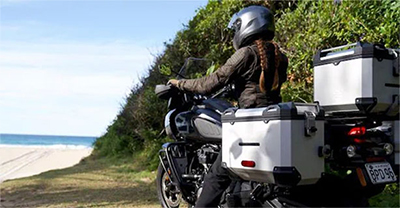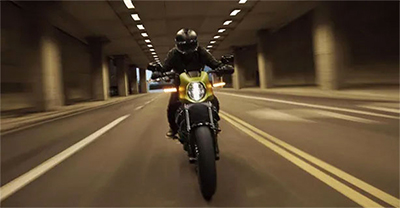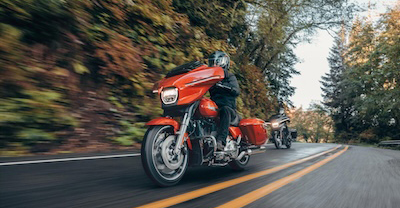By examining depreciation trends, loan terms, down payment amounts, and personal risk tolerance, this analysis will help current and prospective motorcycle owners make informed decisions about whether gap insurance is a prudent addition to their financial safety net.
Shopping around for the best rates and thoroughly understanding the terms and conditions of any gap insurance policy are crucial steps in this process. Additionally, considering alternatives such as a larger down payment or a shorter loan term can help mitigate the need for this additional coverage.
The allure of owning a motorcycle often leads to financing options, with many purchases involving loans or leases.
Alongside these financial arrangements comes a variety of motorcycle insurance products, one of which is gap insurance. This specialized coverage aims to protect borrowers when the value of their motorcycle decreases faster than the outstanding balance on their loan or lease.
For motorcycle owners, the question arises: is gap insurance a truly necessary expense, or is it a niche product reserved for specific circumstances?
This document will delve into the intricacies of motorcycle gap insurance, exploring its function, benefits, drawbacks, and the key factors that determine its relevance for individual riders.
WHAT IS GAP INSURANCE FOR MOTORCYCLES?
Gap insurance, short for Guaranteed Asset Protection insurance, is an optional coverage designed to protect motorcycle owners from potential financial losses in the event of a total loss.
How Does Gap Insurance Work?
It acts as a financial bridge, covering the "gap" between the motorcycle's actual cash value (ACV), as determined by the primary insurance policy, and the remaining balance on the loan or lease at the time the motorcycle is declared a total loss.
What Does Gap Insurance Cover?
It is crucial to understand that gap insurance is not a substitute for standard motorcycle insurance coverages like comprehensive and collision, which are often prerequisites for obtaining gap insurance.
These primary coverages typically pay up to the ACV of the motorcycle if it is stolen or damaged beyond repair.
The circumstances that typically trigger a gap insurance payout occur when the motorcycle is declared a total loss due to theft or a covered insurance incident. This means that the cost to repair the motorcycle exceeds its current market value, or it has been stolen and not recovered.
While gap insurance provides significant financial protection in these scenarios, it's important to note that some policies may contain exclusions. These exclusions could include:
overdue loan payments
unpaid finance charges
the amount of the insurance deductible
damage from previous incidents
Therefore, a thorough review of the specific gap insurance policy is essential to understand its coverage and limitations.
THE ROLE OF DEPRECIATION IN MOTORCYCLE OWNERSHIP
A fundamental aspect of vehicle ownership, including motorcycles, is depreciation - the gradual decrease in value over time. This decline in value begins as soon as the motorcycle is purchased and driven off the lot.
Notably, the rate at which a motorcycle depreciates is often most pronounced during the first few years of ownership. For instance, a new motorcycle can depreciate by as much as 20-30% within the first year.
Some data suggests an even steeper initial drop, with a potential 5% loss within the first six months and 15% by the end of the first year.
Depreciation rates can also vary depending on the brand and model of the motorcycle. For example, Harley-Davidson® models may experience different depreciation percentages depending on the specific line, such as Sportster®, Softail®, or Touring.
After this initial rapid decline, the rate of depreciation typically begins to slow down in subsequent years.
This phenomenon of rapid depreciation has a direct impact on the relationship between a motorcycle's value and the outstanding balance on its loan or lease. Particularly in the early stages of ownership, or when a loan has a longer repayment term, the motorcycle's ACV can fall below the amount still owed.
This is precisely the financial vulnerability that gap insurance is designed to address. If a motorcycle is totaled or stolen, the standard insurance payout will be based on its depreciated value, potentially leaving the owner responsible for the remaining loan balance.
SHOULD YOU CONSIDER MOTORCYCLE GAP INSURANCE?
Factor | Consider Gap Insurance If... | Gap Insurance Might Not Be Necessary If... |
|---|---|---|
Down Payment | Less than 20% or no down payment | 20% or more |
Loan Term | 60 months or longer | Shorter than 60 months |
Motorcycle Condition | New | Used |
Depreciation Rate | Model known for rapid depreciation | Model tends to hold its value well |
Equity | Rolling over negative equity from a previous loan | Consistently have more equity than what you owe |
Ownership | Financing or leasing | Owning outright |
Risk Tolerance | Prefer financial protection against potential debt after a loss | Comfortable absorbing potential debt in case of total loss |
WHEN TO CONSIDER GAP INSURANCE FOR YOUR MOTORCYCLE
Several factors may make purchasing motorcycle gap insurance a prudent decision.
1. Small Or No Down Payment
One of the most significant is making a low down payment or no down payment at all. When a smaller portion of the motorcycle's purchase price is paid upfront (often less than 20% is considered low), a larger amount is financed.
Given the rapid depreciation in the early years, the outstanding loan balance can quickly surpass the motorcycle's market value. For example, purchasing a new motorcycle with no money down, can immediately put the owner in a position where they owe more than the bike is worth.
2. Long-Term Financing (Over 60 Months)
Opting for long loan terms, such as 60 months or more, also increases the potential benefit of gap insurance. With longer financing periods, the principal amount of the loan is paid down at a slower rate.
Consequently, it takes more time to build equity in the motorcycle, extending the period during which the loan balance is likely to be higher than the depreciated value.
3. New Motorcycle Purchase
Financing a new motorcycle is another key scenario where gap insurance is often recommended. As new motorcycles experience the most substantial depreciation in their initial years, the risk of the loan balance exceeding the ACV is highest during this period.
It is also important to note that gap insurance policies are typically only available for new motorcycles.
4. Purchasing A Model With A High Rate Of Depreciation
Certain motorcycle models or types are known for their rapid depreciation. If a motorcycle owner chooses a bike with a historically fast depreciation curve, gap insurance can provide an added layer of financial security.
Researching the depreciation trends of a specific model before purchasing can help inform this decision.
5. Rolling Negative Equity Into A New Loan
If a buyer rolls over negative equity from a previous loan into a new motorcycle loan, the starting loan balance on the new bike will be higher than its actual purchase price.
This immediately increases the likelihood of the loan balance being greater than the motorcycle's value, making gap insurance a more compelling consideration.
6. Location And Riding Behavior
It is also logical to infer that individuals who live in areas with a high incidence of motorcycle theft or those who engage in riding activities that carry a higher risk of an insurance incident might find gap insurance particularly beneficial.
The increased probability of a total loss in these situations amplifies the potential financial exposure if the standard insurance payout is insufficient to cover the outstanding loan balance.
WHEN MIGHT YOU NOT NEED MOTORCYCLE GAP INSURANCE?
Conversely, there are several circumstances where purchasing motorcycle gap insurance might not be necessary.
1. Large Down Payment
Making a sizeable down payment, typically 20% or more of the purchase price, significantly reduces the initial loan amount. This larger equity cushion can often absorb the initial rapid depreciation, minimizing the risk of owing more than the motorcycle is worth.
2. Shorter Loan Term
Opting for a short loan term is another factor that may reduce the need for gap insurance. With a shorter repayment period, the principal loan balance is paid down more quickly, decreasing the amount of time the loan is likely to exceed the motorcycle's depreciated value.
3. Purchasing A Used Motorcycle
As mentioned earlier, gap insurance is generally not an option for those purchasing a used motorcycle.
Used motorcycles typically depreciate at a slower rate compared to new ones, reducing the likelihood of a significant value gap.
4. No Outstanding Loan Or Lease
The most straightforward scenario where gap insurance is unnecessary is when the motorcycle is owned outright, with no outstanding loan or lease. In this case, there is no loan balance to worry about if the motorcycle is totaled or stolen.
5. Aggressive Loan Repayment
Finally, even for financed motorcycles, if the owner has made a substantial down payment or is aggressively repaying the loan, the outstanding balance might consistently remain lower than the motorcycle's market value.
In such situations, gap insurance would offer little practical benefit. Motorcycle owners can periodically assess their bike's current market value against their loan balance to determine if this coverage remains relevant.
UNDERSTANDING THE COST AND VALUE PROPOSITION
Several factors may influence the premium for gap insurance, including:
the type and value of the motorcycle
the total loan amount and its repayment term
the buyer's driving record
their geographical location
Higher-value motorcycles or longer loan terms may result in higher premiums due to the increased potential for a significant value gap.
The true "value" of gap insurance is realized in the event of a total loss where the payout from standard insurance coverage is less than the remaining loan balance.
Consider a scenario where a new motorcycle is purchased for $13,000 with no down payment.
Six months later, it is totaled in a mishap. The primary insurance company determines the motorcycle's current actual cash value to be $10,500, but the owner still owes $12,000 on the loan.
In this case, gap insurance would cover the $1,500 difference.
Conversely, if the owner had made a substantial down payment, resulting in a loan balance below the depreciated value, gap insurance would not provide any financial benefit in this situation.
HOW GAP INSURANCE WORKS IN A TOTAL LOSS CLAIM
In the unfortunate event that a motorcycle is totaled or stolen, the standard motorcycle insurance policy (comprehensive or collision coverage) will typically pay the current actual cash value (ACV) of the motorcycle at the time of the loss, after deducting any applicable deductible.
As discussed earlier, if this ACV is less than the outstanding balance on the motorcycle loan, a financial "gap" arises. This is where gap insurance steps in to cover the difference, up to the limits specified in the policy.
It's important to note certain limitations of gap insurance. While some policies might cover the primary insurance deductible, this is not always the case. Additionally, gap insurance typically does not cover expenses such as:
engine failure
medical costs resulting from an accident
the down payment for a replacement vehicle
WHERE TO PURCHASE MOTORCYCLE GAP INSURANCE
Motorcycle gap insurance can typically be purchased through several channels.
Dealerships often offer it as an add-on when a motorcycle is purchased or financed.
Lenders, such as banks or credit unions, may also provide gap insurance as part of the loan agreement or as a separate offering.
Finally, many insurance companies offer gap insurance as an optional addition to a standard motorcycle insurance policy, which can be more cost-effective than obtaining it through dealerships or lenders.
ARE THERE ALTERNATIVES TO GAP INSURANCE?
While gap insurance provides specific financial protection, there are alternative strategies that motorcycle owners can consider.
Making a larger down payment upfront significantly reduces the initial loan amount, thereby decreasing the risk of the loan balance exceeding the motorcycle's value.
Similarly, opting for a shorter loan term accelerates the repayment of the principal, reducing the time the loan balance is likely to be higher than the ACV.
Some insurance companies, including Harley-Davidson® Insurance Services, offer new motorcycle replacement coverage. This type of coverage, while not a direct substitute for gap insurance, addresses a similar concern by paying to replace a totaled new motorcycle with a brand new one, potentially mitigating the financial impact of depreciation.
Another related option is loan/lease payoff coverage, offered by some insurers. This coverage is similar to gap insurance but may have different payout limits, often capped at a certain percentage of the vehicle's value. It is crucial to understand the specific terms and conditions of these alternative coverages to determine if they meet individual needs.
CONCLUSION: MAKING AN INFORMED DECISION
Gap insurance for motorcycles may serve as a financial safety net, covering the difference between the motorcycle's actual cash value and the outstanding loan balance in the event of a total loss.
This protection is particularly valuable when the rate of depreciation outpaces the repayment of the loan. However, the necessity of gap insurance is not universal and depends heavily on individual circumstances.
Motorcycle owners should strongly consider gap insurance if they make a low down payment, opt for a long loan term, or finance a new motorcycle that is known to depreciate rapidly. Conversely, gap insurance might be less necessary for those who make a large down payment, choose a short loan term, or purchase a used motorcycle. It is certainly not needed if the motorcycle is owned outright.
Ultimately, the decision of whether or not to purchase gap insurance requires careful evaluation of one's financial situation and risk tolerance. Motorcycle owners should compare the cost of gap insurance with the potential financial risk of being left with a significant debt on a motorcycle they can no longer use.
Contact our insurance professionals at Harley-Davidson® Insurance Services to discuss the best options available in your state.
RELATED RESOURCES

No matter what type of bike you ride and no matter what type of coverage you need, here are 16 motorcycle insurance money-savers you may qualify for. Learn more!

For many riders, the insurance process can be daunting. Here’s everything you need to know about motorcycle insurance coverage and protection for you and your bike.

Whether heading across town or to a new state, your current policy may not meet the requirements of your new location. Continue riding legally with these tips.

Discover everything you need to know about getting insurance after buying a motorcycle, along with some tips to ensure you’re covered.



